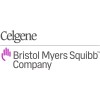
Gallium Nitrate in Treating Children With Brain Tumor, Neuroblastoma, Rhabdomyosarcoma, Non-Hodgkin's...
Brain and Central Nervous System TumorsLymphoma4 moreRATIONALE: Drugs used in chemotherapy use different ways to stop tumor cells from dividing so they stop growing or die. PURPOSE: : Phase I trial to study the effectiveness of gallium nitrate in young patients who have malignant brain tumors, neuroblastoma, rhabdomyosarcoma, non-Hodgkin's lymphoma, or refractory solid tumor.

Study to Find a Safe Dose and Show Early Clinical Activity of Weekly Nab-paclitaxel in Pediatric...
NeuroblastomaRhabdomyosarcoma28 moreThe purpose of this study is to find the safe dose of nab-paclitaxel in children with solid tumors, and to see if it works to treat these solid tumors in children and young adults (in Phase 1 ≤ 18 years old and in Phase 2 ≤ 24 years old). After the final dose has been chosen, patients will be enrolled according to the specific solid tumor type, (neuroblastoma, rhabdomyosarcoma, or Ewing's sarcoma), to see how nab-paclitaxel works in treating these tumors.

Sorafenib Tosylate, Combination Chemotherapy, Radiation Therapy, and Surgery in Treating Patients...
Pleomorphic RhabdomyosarcomaStage IIB Adult Soft Tissue Sarcoma AJCC v72 moreThis phase II trial studies how well sorafenib tosylate, combination chemotherapy, radiation therapy, and surgery work in treating patients with high-risk stage IIB-IV soft tissue sarcoma. Sorafenib tosylate may stop the growth of tumor cells by blocking some of the enzymes needed for cell growth. Drugs used in chemotherapy, such as epirubicin hydrochloride and ifosfamide, work in different ways to stop the growth of tumor cells, either by killing the cells, by stopping them from dividing, or by stopping them from spreading. Radiation therapy uses high energy x rays to kill tumor cells. Giving sorafenib tosylate, combination chemotherapy, radiation therapy, and surgery may be an effective treatment for soft tissue sarcoma.

A Study of CD45RA+ Depleted Haploidentical Stem Cell Transplantation in Children With Relapsed or...
Ewing SarcomaGastrointestinal Tumor11 moreThis is a phase I study designed to determine the feasibility of transplantation using a novel transplant approach that employs a two-stage haploidentical cell infusion following myeloablative conditioning. This strategy, which includes selective depletion of naïve T cells, may speed immune reconstitution thereby potentially reducing the limitations of traditional haploidentical hematopoietic stem cell transplantation (HSCT) and increasing its potential therapeutic application. Additionally, the investigators intend to explore overall survival, event-free survival, hematopoietic cell recovery and engraftment as well as infection rates and complications in these patients.

Enoblituzumab (MGA271) in Children With B7-H3-expressing Solid Tumors
NeuroblastomaRhabdomyosarcoma4 moreThis study is a Phase 1, open-label, dose escalation and cohort expansion trial designed to characterize the safety, tolerability, PK, PD, immunogenicity and preliminary antitumor activity of enoblituzumab administered IV on a weekly schedule for up to 96 doses (approximately 2 years) in children and young adults with B7-H3-expressing relapsed or refractory malignant solid tumors.

Gemcitabine With or Without Pazopanib in Treating Patients With Refractory Soft Tissue Sarcoma
Adult Alveolar Soft Part SarcomaAdult Angiosarcoma17 moreThis randomized phase II trial studies how well gemcitabine hydrochloride works with or without pazopanib hydrochloride in treating patients with refractory soft tissue sarcoma. Drugs used in chemotherapy, such as gemcitabine hydrochloride, work in different ways to stop the growth of tumor cells, either by killing the cells or by stopping them from dividing. Pazopanib hydrochloride may stop the growth of tumor cells by blocking some of the enzymes needed for cell growth. Pazopanib hydrochloride may also stop the growth of tumor cells by blocking blood flow to the tumor. It is not yet known whether gemcitabine hydrochloride is more effective with or without pazopanib hydrochloride in treating patients with soft tissue sarcoma.

NK DLI in Patients After Human Leukocyte Antigen (HLA)-Haploidentical Hematopoietic Stem Cell Transplantation...
LeukemiaMyeloid6 moreThis is a phase I/II study of highly selected donor lymphocyte infusions in patients undergoing HLA-haploidentical hemopoietic stem cell transplantation. Patients will be offered "pre-emptive" NK-DLI early after HSCT. Three schedules of NK-cell infusion will be studied: Basel patients (adult and pediatric) will receive NK-DLI on days +40 and +100 (pre-emptive-late); Frankfurt patients (pediatric) will receive NK-DLI on days +3, +40, and +100 (pre-emptive early). Patients not receiving pre-emptive NK-DLI with loss in donor chimerism or with evidence of minimal residual disease will be offered "therapeutic" NK-DLI.

A Phase I Dose Finding and Safety Study of Oral LDE225 in Children and a Phase II Portion to Assess...
MedulloblastomaRhabdomyosarcoma4 morePhase I dose-escalation study to characterize the safety, tolerability, pharmacokinetics and pharmacodynamics of LDE225 given orally on a daily dosing schedule in children with recurrent or refractory medulloblastoma, or other tumors potentially dependent on Hedgehog signaling pathway. Phase II study is to assess preliminary efficacy in both adult and pediatric patients with recurrent or refractory MB.

HSV1716 in Patients With Non-Central Nervous System (Non-CNS) Solid Tumors
RhabdomyosarcomaOsteosarcoma7 morePatients with relapsed solid tumors such as sarcomas and neuroblastoma have a poor survival, generally < 20%. There is an urgent need for new treatments that are safe and effective. HSV1716, an oncolytic virus, is a mutant herpes simplex virus (HSV) type I, deleted in the RL1 gene which encodes the protein ICP34.5, a specific determinant of virulence. Mutants lacking the RL1 gene are capable of replication in actively dividing cells but not in terminally differentiated cells - a phenotype exploited to selectively kill tumor cells. In previous clinical studies, HSV1716 has been shown to be safe when injected at doses up to 10^5 plaque forming units (pfu) directly into human high-grade glioma and into normal brain adjacent to tumour, following excision of high-grade glioma. In an extension study, HSV1716 has been shown to be safe when injected at a dose of up to 10^6 pfu directly into brain tumours. Replication of HSV1716 in human glioblastoma in situ has been demonstrated. Following a single administration of HSV1716 by direct injection into active recurrent tumor or brain adjacent to tumor, some patients have lived longer than might have been expected. This study seeks to evaluate the safety of a single injection of HSV1716 in the treatment of extracranial solid tumors in adolescents and young adults. HSV1716 has also proved safe when given by direct intra-tumoural injection in patients with squamous carcinoma of the head and neck, and in patients with malignant melanoma. Replication of HSV mutants in human sarcomas and neuroblastoma in cultured cells and human xenograft models has been demonstrated. This study is designed in two parts. PART 1 of the study specifies a single dose of virus. Participants who experience at least stable disease or relapse following a determination of stable disease, may qualify for subsequent doses in PART 2. PART 2 requires signing of a separate consent. Funding Source - FDA OOPD

Trial of Dasatinib in Advanced Sarcomas
RhabdomyosarcomaMalignant Peripheral Nerve Sheath Tumors10 moreThis study will examine the response rate and the 6-month progression-free survival rates of subjects with advanced sarcoma treated with dasatinib.
